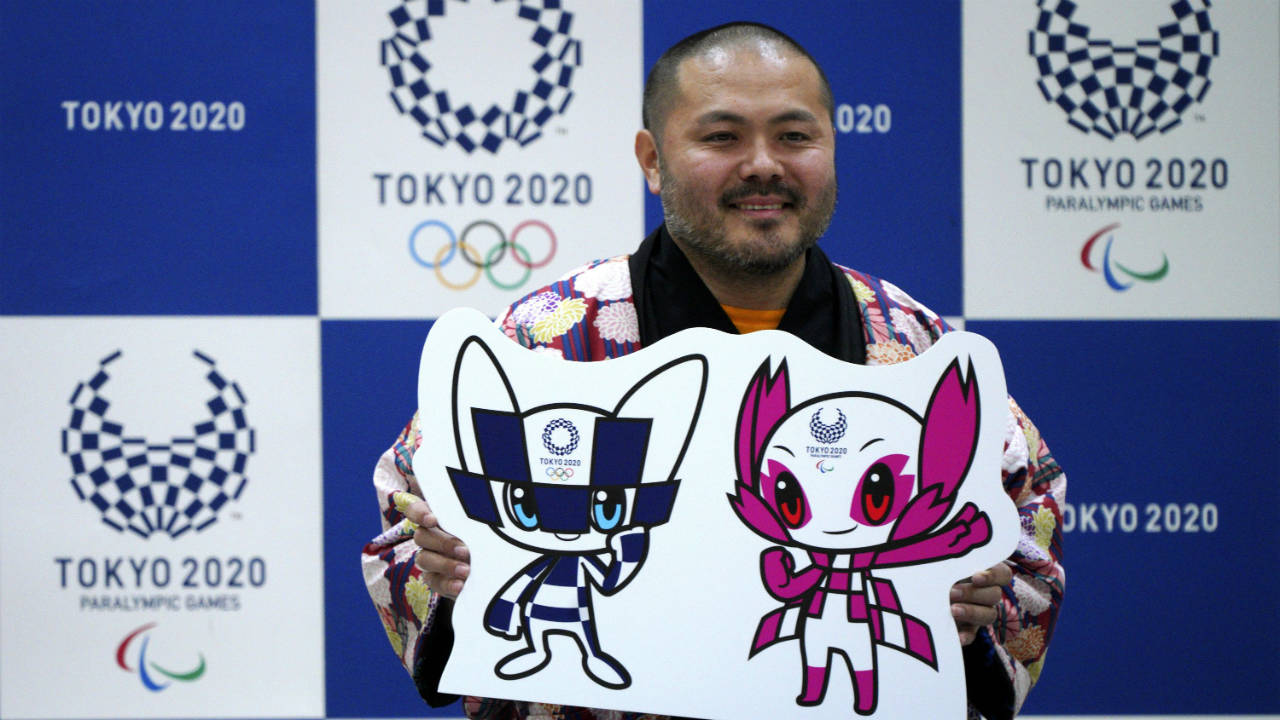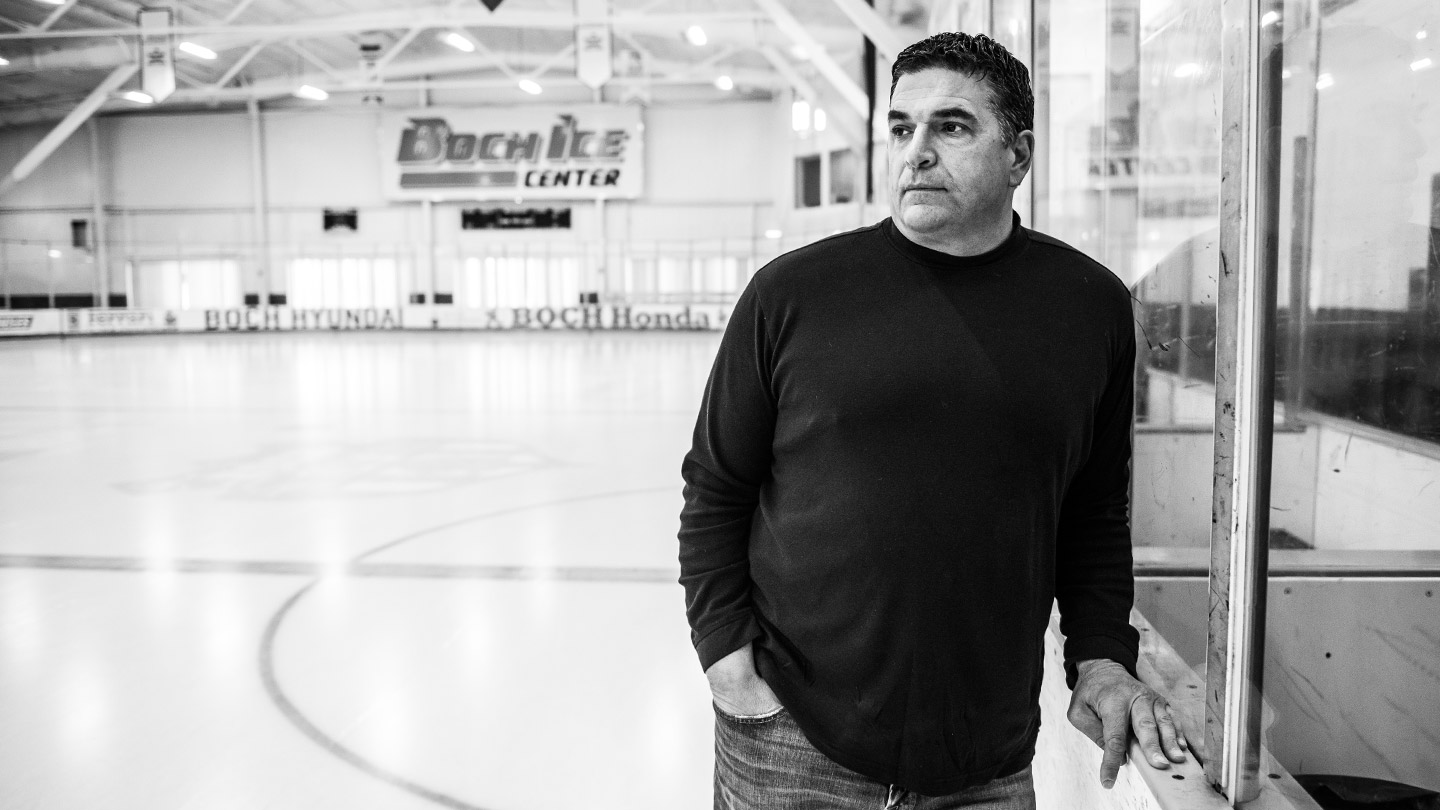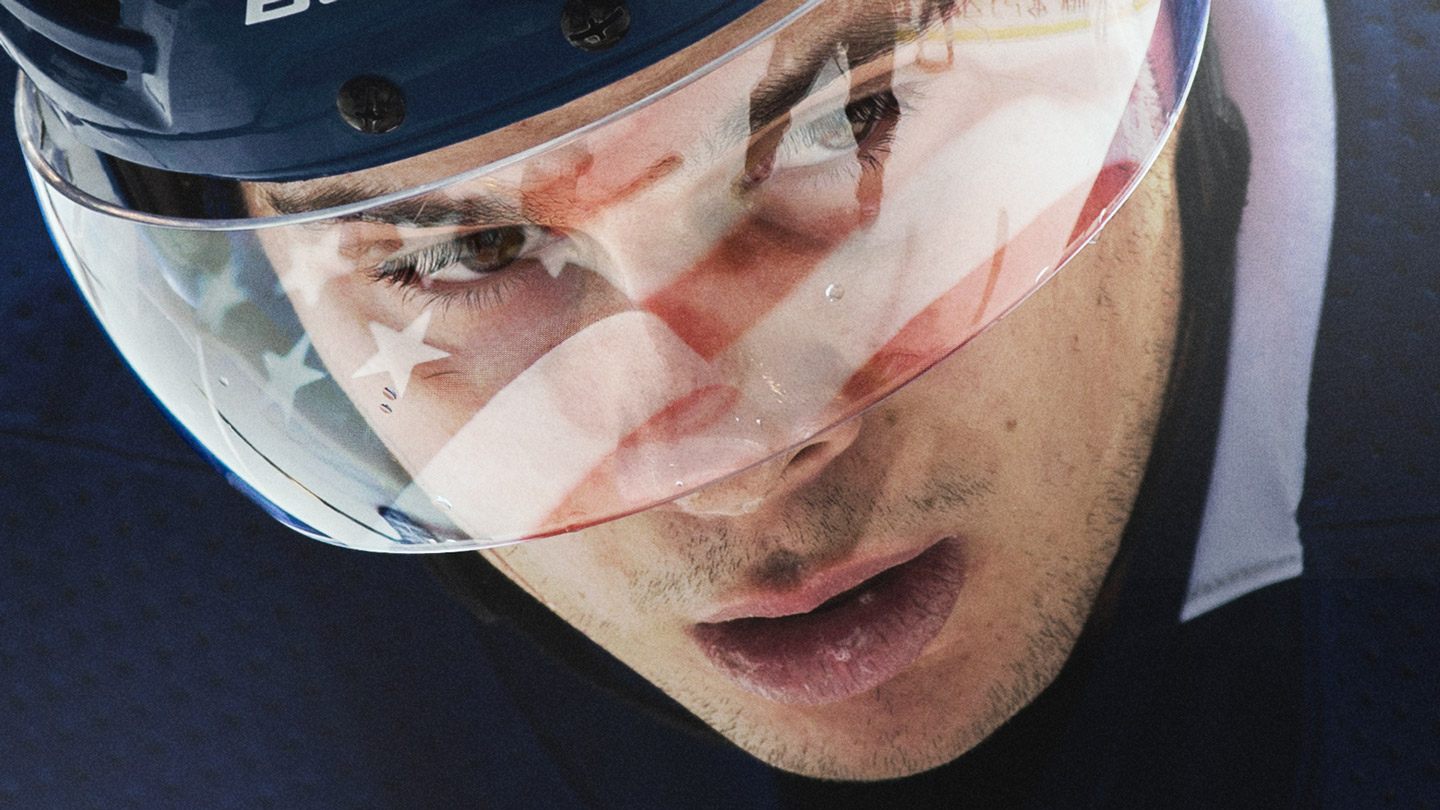Dominic Larocque can’t be sure that some of what he thinks happened to him didn’t come from action movies. He’s sitting in a Toronto hotel lobby after a morning practice with Canada’s para ice hockey team. His posture is perfect. The 30-year-old has short blonde hair and his army service number is tattooed on the inside of his left wrist. “There are things I’ve been told about the accident,” Larocque says, hands folded on the table in front of him. He quickly corrects himself — it was no accident.
He’s seen flashbacks: His 20-year-old body flying out of the armoured vehicle he was riding in, then landing hard on a dirt road just outside Afghanistan’s Panjwayi District. Fiery objects dropping from the sky. Trying to move his broken jaw, trying to yell. Frantically scanning with his eyes for the other men in his unit. Looking down at his blood-covered body and a shattered left leg. Feeling shock, not pain.
The memories Larocque can trust are less cinematic: Going to bed the night before the LAV III set off that improvised explosive device, and waking up four days later in a Kandahar hospital. Everyone survived the blast, but he was among two Canadians badly injured. In his hospital bed, Larocque looked down at his left leg “and it was gone,” he says. The doctor’s choice had been clear: amputate above the knee or Larocque was dead. His right leg was broken in two places and his ankle was fractured, too. Larocque doesn’t remember if he cried, but he did ask the doctor to give him more morphine so he could continue his mission. “Seriously,” he says now with a laugh, widening his eyes. “I realized quickly [after that] it’s not possible for me to go back to the battlefield.”
No, Larocque couldn’t stand on his right leg for a second, let alone return to combat. But in the decade since that devastating explosion in the winter of 2007, he has not only learned to walk again and to live with just one leg, he has also become a two-time world champion. Larocque stands out among the Canadian Paralympians bound for Pyeongchang, and not only because he’s the lone army veteran competing for this country. He also recently made an unfathomable decision to help his team win: Months after he won Paralympic bronze in Sochi, scoring the second-most goals for Team Canada in the tournament, Larocque changed positions. This was not your usual forward switching to the off-wing or trying centre. It wasn’t even shifting back to the point, like Dustin Byfuglien successfully did. No, at age 26, Larocque decided to become a goalie. Imagine if Byfuglien had pulled that with the Jets. “Honestly,” says Canada’s head coach, Ken Babey, who’s been around the game more than 50 years, “I’ve never seen this before.” No kidding.
And the thing is, the five-foot-10, 180-pound Larocque is not just any goalie. In fewer than four years, he has become the world’s best, according to teammate and veteran sniper, Billy Bridges, who puts it simply: “There’s not a goalie I’d want to face less than Dom.” It was Larocque who backstopped Canada to a world championship last year with a win over the rival Americans. And for a country that hasn’t won Paralympic gold since 2006, his change in position could prove to be the factor that helps Canada get back on top of the podium in March. Of course, this was all part of Larocque’s plan. “People thought I was crazy,” he says with a shrug. “But I can have a bigger impact now.”

Like a lot of kids who grew up where he did and when he did, Larocque looked up to Patrick Roy, but he emulated the Hall of Fame goaltender only on the streets and in the driveways of his French-speaking hometown, Salaberry-de-Valleyfield, a four-hour drive southwest of Montreal. On the ice, Larocque played centre from the time he first put on skates. An all-around athlete who also excelled in soccer and football, he eventually focussed on hockey, and as a teen played for Les Braves de Valleyfield in Quebec’s Junior AAA league. When he was 18, he stopped playing altogether so he could pursue his other passion: the military.
His interest in joining the army had been piqued years earlier, in part because his grandfather, Lucien Poulin, had served. Poulin died when Larocque was a baby, but Dominic heard plenty of stories about his grandpa’s service from his grandma. At 16, Larocque told his family: “I want to join the army and make a difference.” He remembers his parents, younger brother and older sister weren’t exactly overjoyed, “but the decision was mine,” as he puts it. His sister Isabelle says, “We were happy that he found something to do that he was passionate about.”
In 2005, Larocque enlisted with the Royal 22nd Regiment, the Van Doos, the largest in the Canadian Army. The plan was to join the search and rescue unit, wear an orange suit and jump out of a helicopter to find and help those in need; Larocque never wanted to play a role in combat. “I love the medical aspect,” he says, “the idea of saving lives.” But the job required a minimum of four years’ prior service. Two years after he enlisted, Larocque was deployed to Afghanistan.
He was 20 years old and excited about the trip — in part because it marked his first long journey on a plane, in part because he was going with many of his closest friends. “I was innocent,” Larocque says. “You don’t really know what is going on. I trained, I’m going, I’m doing what my sergeant or master corporal told me to do.”
When she said goodbye to her little brother, Isabelle had just one thought: “Is he going to come back?”
Fewer than five months later, the Larocque family got a phone call late one night from the Canadian Army. The initial reaction was one of relief: He’d survived the bombing. Early details were that he’d badly injured one leg and broken the other, that his face and jaw were damaged, that he was concussed. The next day, the family was notified that Larocque had complications with blood circulation. It cost him his left leg.
Isabelle and her father, Pierre, flew to Germany to visit him at the Landstuhl Regional Medical Center. Isabelle tried to get all her tears out in the hallway before she walked into her brother’s hospital room for the first time. He was asleep, and she listened as he talked softly, dreaming he was still on a mission and trying to protect the innocent.
When he woke up and saw his sister and his dad, all three sobbed.
“I love you,” Isabelle told her brother. “I’m so happy you’re alive.”
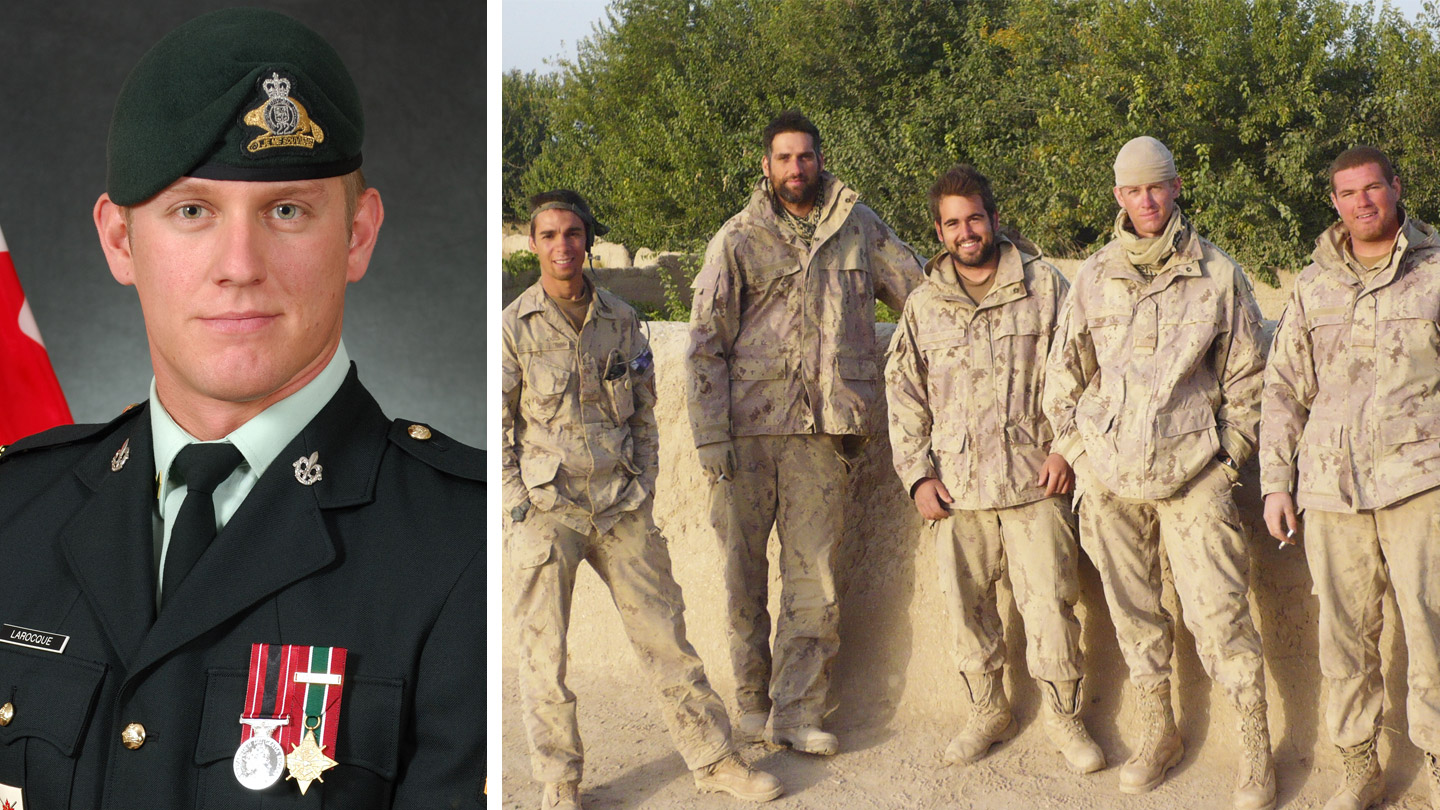
Larocque walks out of a dressing room and heads over to a black sled that’s waiting rink-side for him at Toronto’s Mastercard Centre. In one fluid motion, he removes his black prosthetic leg, covers his stump with a black pad, and lowers himself into the sled, which looks like it’s been run over by a car a few times. Covered in dents and cuts from errant skate blades, padding has been removed in some places and added wherever Larocque felt it would do the most good, and the sled is now held together with layers and layers of hockey tape. Despite the alterations for comfort’s sake, Larocque confirms it’s still uncomfortable. He tucks his stump in behind his right leg, which has the goalie pad on it.
Wearing a grey Team Canada practice sweater, he pulls down a helmet painted with an open-mouthed beaver with angry eyes and huge front teeth (Larocque calls the beaver “cute”). It’s the animal associated with his regiment. Larocque grabs his goalie stick and lays it across his lap, then lifts himself onto the ice. He skates around to warm up, pushing himself with his arms, using the short metal spikes on his glove and blocker for traction. After warmup, on a breakaway drill, teammate Liam Hickey handles the puck from left to right under his sled and back again (players have two sticks in para ice hockey, one in each hand), before firing a shot from his right. Larocque makes the glove save and his teammates yell: “Woo!”
The first thing you’ll notice about Larocque on the ice is the biggest thing the opposition has to contend with, his size. In para ice hockey, goalies either sit with their upper body squared up against the competition, like you see in stand-up hockey, or they’re positioned sideways near one post with their padded leg (or legs) across the crease. Larocque is in the first camp. His upper body faces the action and fills the majority of the net, and his head is nearly at crossbar level. Bridges, MVP of the gold medal game at the world championships last year, says size is part of what made his teammate a quick study at this position. “Dom just makes me miss the net,” Bridges explains. Married to a goalie in two-time Olympic gold medallist Sami Jo Small, Bridges is used to practicing on a keeper who fills more of the net than your usual para goalie does, but Larocque is unusual. “You see it with some of the best shooters in the world from the States, the guys are missing or not even shooting, because they don’t see anything,” Bridges says. “He’s covering everything; he’s huge. And so smart.”
Size isn’t the only explanation teammates have as to why Larocque adapted so quickly to the net. Forward Adam Dixon boils it down to this: “He’s French and he’s obviously a crazy good athlete, so he just does what he wants.” When he played forward, Larocque was one of the best on the team at tipping pucks. Captain Greg Westlake points out he was a great shot-blocker on the penalty kill, too. “Hmm,” Westlake says, “maybe we should’ve seen this coming.” Larocque is also a workhorse. You could slap his comments about effort and determination on a motivational poster: “If you have a goal in your life, you cannot wait for somebody to help you to reach it. If you want something, work for it.”
Larocque has applied a military-style work ethic to hockey, and he’s brought the manners and grooming, too. Dixon is sometimes Larocque’s roommate on the road, and he’s pretty sure his buddy isn’t a fan. “Dom’s a military man, and I don’t live a military lifestyle,” Dixon says. “He’s very clean.” Larocque agrees, “especially compared to Adam,” he says, with raised eyebrows. “He’s always early for team meals, meetings, you name it,” Babey says. “He’s always well groomed, his face is shaved, no mullet.”
Larocque doesn’t call Babey “coach,” it’s “sir.”
Perhaps the most valuable of assets from the goalie’s military past, in Babey’s mind, are Larocque’s concentration and his unflappable disposition. “On the ice what I see is a player very focused on the mission ahead, the tactics and executing properly,” says Babey. “That’s where his mindset comes out, too, in terms of his play. He’s that calming influence, you know? Military people, things are happening, everyone’s running around and they’re calm, getting it done. He’s calm in battle. That keeps everyone else calm.”

When he first started playing goal, teammates would skate over and tell Larocque it was OK if he got scored on. “I know,” he’d reply. “Just go score.” Bridges laughs: “It’s so wicked that he’s on our team.”
Only recently, however, will teammates admit it’s wicked that he’s their goalie. The idea of a first- or second-line forward getting between the pipes when Team Canada already had a world-class goaltender took some convincing, as you can imagine. Larocque first brought it up with teammates in April of 2014. “Everyone thought it was nonsense,” Westlake says, until Larocque showed up at a training camp four months later wearing goalie gear. He’d shelled out $3,000 for the equipment.
Corbin Watson is Team Canada’s other goaltender, and has played the position since he was five, both before and after the car accident that cost him a leg. Watson had this to say to Larocque: “Why? Why? Dude, we need goals! We need guys who can score!” Bridges, too, was against the plan. “Knowing how effective a forward he was, he was so dominant with both hands, so fast, a clutch player,” the 33-year-old PEI product says. “And we lost that. We battled him so hard.”
Larocque was not only not scoring goals, he was giving up some soft ones. In those early practices, he did his fair share of looking up at the ceiling after getting beat by weak shots. “The first few days in net were not cool,” he says, shaking his head. Mobility, especially, was an issue, and his teammates had an easy time deking on him.
Bridges was relentless in trying to convince Larocque to give up on his new position. “You’re letting us down,” he’d say. “You’re not doing anything to help the team.” Larocque’s reply was always the same: “Yeah, but I will get better.”
Larocque spent 2015 as the backup and saw minimal action, especially given the team plays fewer than 30 official games some seasons. It was frustrating, to be sure, and it wore on him. “You don’t play a lot, you see your team losing games, you’re not winning any gold medals and you’re sitting on the bench,” Larocque says. “You think you can have a big impact as a goalie but you don’t play. That was tough.”
Not just for him, either. At the world championships in 2015, Canada lost 3-0 to the Americans in the gold-medal game, and one of the guys who could’ve gotten them on the board didn’t log a second of ice time. “It was frustrating seeing this amazing forward sitting on the bench,” Bridges says. “We didn’t have the patience at that point, but it was amazing that he did.”
While it was a rough start, it didn’t take long for Larocque to improve. Watson says that’s in part because Canada boasts some of the best shooters in the world, in guys like Bridges and Dixon and Westlake and fellow forward Brad Bowden. Larocque gets to practice regularly against elite talent. “Less than two years in [to Larocque picking up the position], both of us were going toe-to-toe against each other,” Watson says. “It was fantastic.”
As a result, Canada is now in a unique position with regard to the most important position on the ice. Most of the world’s best teams don’t have depth in net — Bridges, who was born with spina bifida and has been playing this game more than two decades, says in the past it was so hard to find goalies that “we always ended up putting the most disabled guy in net.” National teams have the best of the best in goal, of course, but to have two elite goalies on one roster is an anomaly. And before Larocque came into the picture, Watson was without question the No. 1 for Canada, with no threat of losing his position. “He’s really good, so it’s hard to compete against him, but I was sure I was able to compete,” Larocque explains. “And if I wasn’t No. 1, it’s OK, but I’m pushing him to be better and better. And that makes our team better.”
Babey couldn’t agree more, though count the coach surprised to already have what he calls “two first-stringers.” He never anticipated Larocque would get so good so fast. When Babey joined this program in January of 2015, his first question for Larocque — who he’d seen scoring goals for Canada in Sochi — was this: “How come you’re playing goal now?”
Larocque’s answer: “My dream is to be in the gold-medal game in the Paralympics in 2018 and lead Canada to victory.”
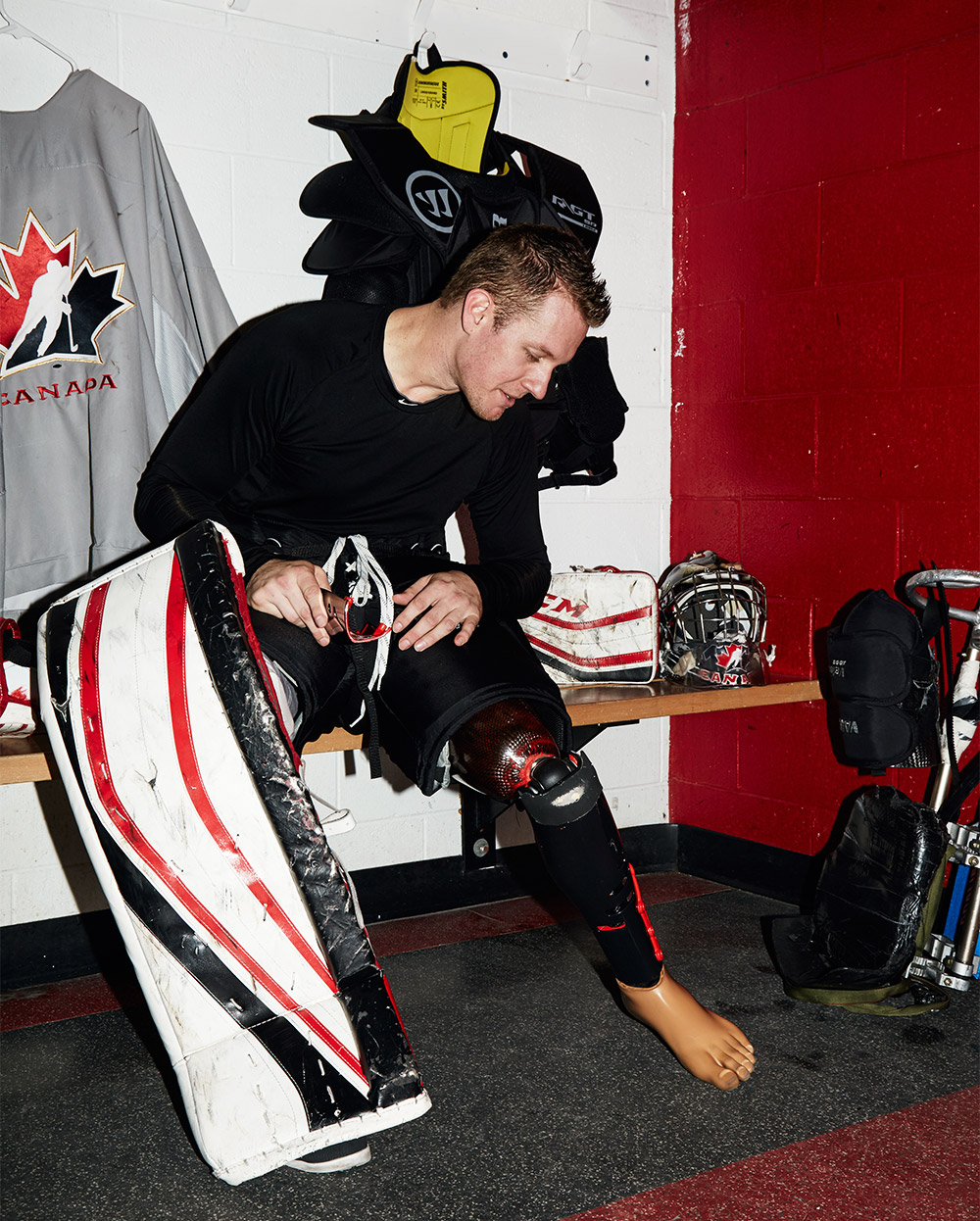
He stood for the first time without the help of a person or a railing or a chair or a wall in January of 2008, more than two months after he was injured. “I lasted three seconds, maybe five,” Larocque says, on that shaky right leg. “Felt like an hour.” The pain was incredible. The frustration brought on tears. “You feel so different, so weak.”
It was another month before Larocque could stand for 30 seconds. He’d make progress, be standing for longer and walking on crutches, and then have to undergo another surgery and put his rehab on hold. “Those were the worst moments, because you’re going down again,” he says, lowering a hand to the table to mimic the descent. “You see the recovery, you look at the progression, you get more motivation every day. But then you just have to wait and almost start over.”
After a final major surgery on his tibia, Larocque got back to work. He hit milestones, like walking for two hours with crutches and without pain before he had to sit back in his wheelchair. He got his first prosthetic leg and started walking on it with crutches, going further and further each day. He smiles and shakes his head, thinking back to the first time he walked on two legs again. “It was a kind of freedom, like when you get your first car,” he says. “You feel like you can do anything.”
That prosthetic leg signaled his second chance at living the life he’d been accustomed to before the IED changed everything. And at the 2010 Vancouver Paralympic Games, Larocque discovered para ice hockey (then known as sledge hockey) and a second chance to represent his country — this time through the sport he’d fallen in love with as a kid.
Bridges remembers hearing about Larocque during those 2010 Paralympics, one of a number of injured military veterans honoured in Vancouver, and seeing him smiling on the Jumbotron alongside then-Prime Minister Stephen Harper while taking in the action. “Obviously, Dom was a big deal, and a hero,” the forward says. And though Larocque had yet to play the game, Bridges expected to see him on the team someday.
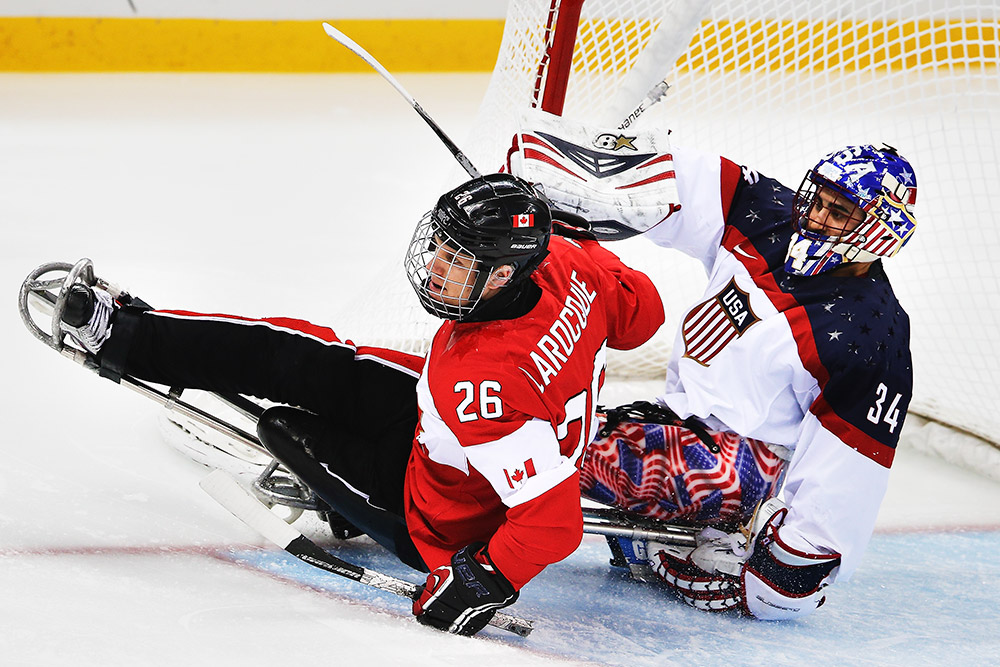
That day came quick, too: Larocque took up the sport after the Paralympics, practicing on his army base in Quebec along with stand-up players. Just seven months later, in September of 2010, he received his first invitation to a Team Canada selection camp. “We knew right away we were lucky to have him,” Bridges says. “The minute he got into the sled, he was the tallest guy on our team. You could see he had this raw ability.” In his first-ever game with the national team later that year, Larocque scored. “Two goals,” he says, laughing. “It was incredible.”
While he was a quick study on the ice, Larocque took significantly longer to get a grasp of the English language. When he first joined the team, his English was pretty well non-existent. He did all his media interviews with the help of a translator. Westlake used to draw pictures to communicate with Larocque, or he’d ask a bilingual teammate to convey a message. “I was looking forward to his English getting better so I could actually get to know him,” the captain says. “It’s sort of like we had two relationships: pre-English Dom, and post-English Dom.”
One of their most powerful exchanges came in that pre-English era, though, and it didn’t require words. While sitting together at an airport in Germany, Larocque pulled out his iPad, and for 45 minutes he and Westlake scrolled through pictures of the experience in Kandahar. Westlake saw his teammate wearing fatigues and holding a machine gun. He saw a group photo of Larocque with the men in his unit. He saw artillery and vehicles and the landscape and some of the civilians Larocque was protecting. “That was the first time I felt really connected and appreciative of Dom’s past,” Westlake says. “It was incredible.”
Westlake by then had already come to appreciate how hard Larocque works; he didn’t need photos or a translator to confirm what he could see on the ice and in the gym. And that’s why, after the Sochi Paralympics, Westlake wasn’t concerned when he heard that Larocque was going to take up goaltending. And he wasn’t concerned when he found it was pretty easy to score on his teammate, in those early practices. “Every camp he shows up, he’s better than the last,” Westlake says. “We trust him to go to work, to better himself every chance he gets, because that’s what he’s been doing since Day 1.”
It sounds a lot like captain-speak, but Westlake continues. “You know how there’s people in your life you meet that you just have faith in?” he asks. “That’s Dom.”
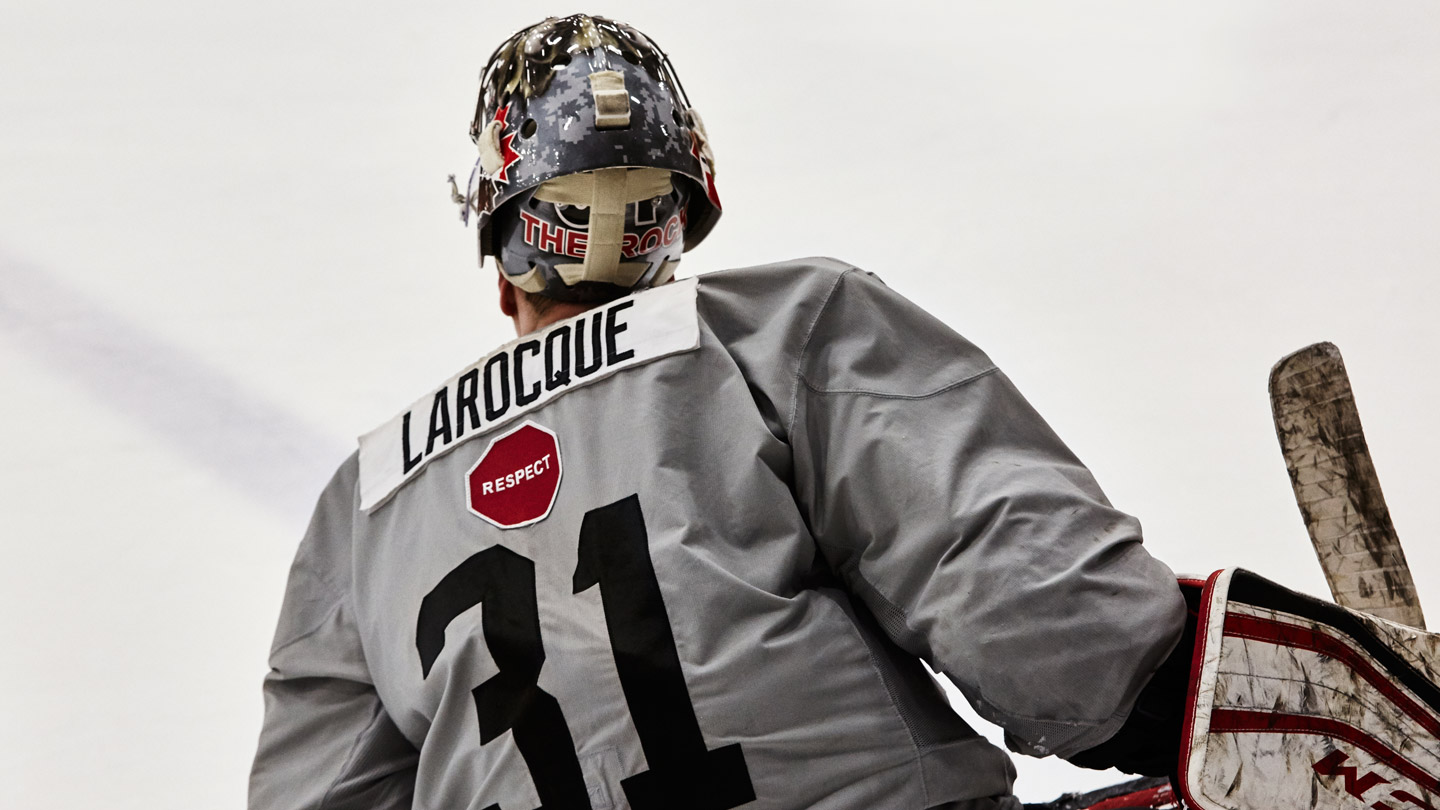
Declan Farmer splits the Canadian defence and tears down the ice on a breakaway. The American is one of the most prolific goal-scorers there is, and now he has a chance to cut Canada’s lead to one here at the 2017 World Championships.
Farmer handles the puck from left to right, he shifts his upper body side to side, and then he makes a quick move in front of the crease in an attempt to deke out Larocque. The Canadian goalie throws himself to the right, extends his glove and blocker, and he makes the save.
It’s still 2-0 Canada, early in the second period.
“There was time for them to get momentum and come back, and Dom shut that down,” Westlake says, recalling what he felt was a turning point in their world championship victory last April. “It was a great save, and that’s a save I don’t think he would have made two years ago. It gave us even more momentum.”
Larocque was near perfect in the game, and Canada went on to a 4-1 win over their archrivals. He’s still a little ticked he didn’t earn the shutout, though. They took two penalties in the final minutes, “our mistake,” he says, and the Americans scored on a 5-on-3 power play.
The win was an enormous moment for the program. It had been four years since Canada had beaten the Americans on either of the biggest stages in their sport, in a world or Paralympic final. And ahead of that gold-medal game, they’d lost five of the last six head-to-head matchups with their rivals, including in round-robin play days earlier.
Babey chose to start the goalie on his roster with fewer than three years’ experience not only because he’d been playing well, but because he wanted to give him big-game experience before the Paralympics. “The proof’s in the pudding,” Babey says. “He made key saves early, and under pressure. He stopped the Americans.”
And while that will be the toughest task Canada faces in Pyeongchang, their army veteran-turned-forward-turned-goalie is more confident than ever that Canada will be atop that podium. “This is the year for us to win that gold medal,” Larocque says. “With what we did last year at worlds, we think we have the best chance.”
It’s because he feels he’s in the position he was always meant to be playing. “I like pressure, I like to try to be perfect,” Larocque says, just before joining his teammates for an off-ice workout.
“This is what I’ve always wanted,” he adds. “To be the difference.”

